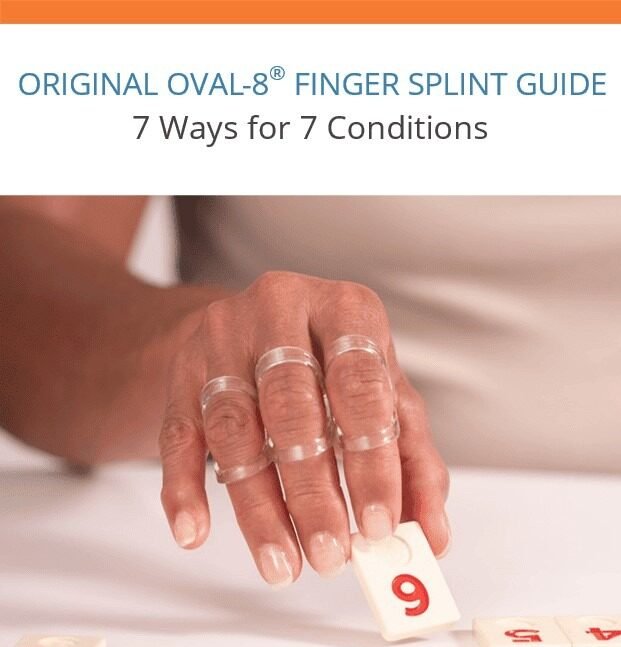If your finger or thumb locks, clicks, or gets stuck in a bent position- then suddenly pops back when trying to straighten it, like a trigger on a gun, you might be dealing with trigger finger (or trigger thumb). Surprisingly common, this condition often arises from repetitive motions like gripping or pinching—think writing with a pen or gardening. It’s also very common in jobs like dentistry, where holding tools all day is part of the routine. But the big question is, can trigger finger heal on its own? The answer is a bit complicated.
This blog is your guide to understanding trigger finger—what it is, the symptoms to look out for, and effective ways to manage it.
What is Trigger Finger/Trigger Thumb?
Trigger finger or thumb occurs when your affected finger around the tendon is inflamed or swollen, making it painful or difficult for the finger to move properly. Imagine a rubber band gently pulling to straighten your finger being suddenly locked by a knot—that’s how the tendon feels during a “triggering” episode. Sometimes, you’ll hear clicking or popping as it “snaps” back into place.
Triggering often happens:
- After gripping something for a long time, like using a gardening tool.
- In the morning, especially if you’ve been sleeping with your hands in a fist.
- When doing activities that involve a lot of pinching, gripping, or repetitive strain.
DOWNLOAD THE FREE OVAL-8 GUIDE:
Health conditions like diabetes or rheumatoid arthritis can also increase the risk.
Symptoms include:
- Clicking or locking when straightening a bent finger or thumb
- Stiffness, especially in the mornings
- Tenderness or pain around the base of your affected finger/thumb
- The sensation of your finger/thumb “catching” or being stuck
While it might seem like a small nuisance, untreated trigger finger can worsen over time, causing more pain and potentially permanent locking or limited mobility in severe cases.
Can Trigger Finger Heal Without Treatment?
If your trigger finger is mild and caused by temporary overuse, it might get better on its own. However for most people, it tends to stick around, get worse, or even start locking up more often without some kind of treatment.
The healing process largely depends on rest, reducing inflammation, and immobilizing the affected finger to reduce pain and improve your ability to move your finger.
- Rest your finger/thumb and avoid activities involving repetitive gripping.
- Wear a splint that keeps your finger or thumb in an extended position and limits the motions
- Apply ice to the palm of your hand
- Consider cortisone injections if advised by your healthcare professional
Managing Trigger Finger with the Oval-8 Finger Splint
One of the first steps to managing trigger finger effectively is by keeping the affected finger extended, especially during activities or sleep. The Oval-8 Finger Splint is a lightweight, waterproof, and easy-to-wear option designed specifically for this purpose.


How Does the Oval-8 Finger Splint Help?
- Immobilization: Oval-8 Finger Splints lock your finger or thumb in an extended position, giving the tendon time to heal while reducing strain.
- Pain Reduction: By limiting triggering movements, splints reduce inflammation and discomfort.
- Improved Mobility: With healing supported by the splint, users often report regained finger motion and flexibility over time.
- Comfortable for Daily Wear: Thanks to their lightweight design, Oval-8 splints can be worn throughout your day without interfering with daily tasks.
- Waterproof & Durable: Perfect for handwashing, gardening, or even exercise.
Trusted by hand care specialists for over 25 years, the Original Oval-8 Finger Splint has helped countless individuals manage and recover from trigger finger symptoms effectively.
How to Get Started with Oval-8 Splints
- Measure Your Finger: Proper sizing is essential to ensure the splint works effectively. Multi-size packs offer the flexibility to find the perfect fit.
- Use Regularly: Wear the splint throughout the day or overnight as indicated, combined with rest and ice application if needed.
When Should You See a Healthcare Professional?
If you experience ongoing pain, pronounced swelling, or a finger that remains stuck in place, it’s crucial to seek advice from a healthcare professional. Severe cases may require a cortisone injection or even minor surgery to release the affected tendon.
Don’t Wait It Out
There’s no need to simply “wait it out” when dealing with trigger finger or thumb. With the right approach, you can alleviate symptoms, prevent worsening, and regain pain-free finger movement.
Like what you’ve read? Click here to subscribe to the blog!
View Video
Learn More About Products for Trigger Finger/Thumb
Click on the images below


Our blogs are educational in nature and are not intended as a substitute for medical advice. Because your condition is unique to you, it is recommended that you consult with your health care provider before attempting any medical or therapeutic treatments. We are always happy to answer questions about products mentioned in our blogs, however, we cannot provide a diagnosis or medical advice.
About the Author: Ginny Wolfe has been a dedicated team member at Oh My Arthritis (OMA) for over a decade. Her knowledge and expertise of OMA’s orthopedic products play a vital role in providing valuable health and wellness information. This information effectively showcases the benefits and features of their products, empowering customers to make informed choices. OMA is celebrated for its dedication to improving the lives of those living with arthritis, injuries, and various health conditions. With a mission to deliver innovative and effective solutions, OMA has earned trust by offering products that alleviate pain and enhance joint mobility. Known for its premium splints, braces, and supports, OMA empowers individuals to maintain an active lifestyle while finding relief.


